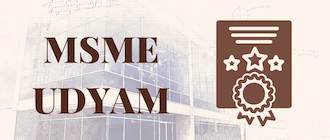Project Selection Assistance
"... Our best business missions are based on those ideas that often emerge out of our deepest personal motivations and interests." -Warren Avis in "Take a Chance to Be First"
It all begins with an Idea..
The overriding reason for anyone to think of establishing a MSME unit can be summarised in one word - opportunity. An opportunity to provide a product or service, which can generate sufficient surplus. This is all the more true if one is a believer in the maxim, "Small is Beautiful". However, ideas need to be filtered through a multilayer sieve. This gives you an idea of Project Selection. This model is shown in the following flow:
- Does the idea fire up your motivation?
- Is it a viable business proposition in your area?
- Does it match the needs of your clientele?
- Check it out with basic market research
- Test it out at market place
- Consult with the experts
- Look out for competition in the field
- Is it a sunrise industry?
- Your business opportunity
- Project conceptualisation
Once the ideas are screened and a viable business opportunity emerges the project has to be conceptualised in all its dimensions. The 4 Ps of Project Conception is:
- PRODUCT (Shape, Size and Nature)
- PROCESS (Technology to produce the product)
- PLACE (Location of Plant)
- PARTNER (Technological of Financial Collaborator)
Making a Product Choice
In a project conceptualization stage while making a product choice following factors are related to product need to be considered:
- Product Line - Depth, Width
- Packaging
- Branding
- Warranties
- After Sales Service
Some other factors that one should consider while finalising the product choice are:
- Ease of availability of raw-material
- Process Technology
- Accessibility to the market
- Incentive and support from Government
Market information is also important for product selection. Products, which are likely to have a number of players in the market, are best avoided. Some such products in the recent past have been plastic footwear, audio cassettes, disposable gloves and bulk drugs.
In case the entrepreneur is looking for a product, which has export potential, the following additional questions need to be asked:
- What should be the contents of export-product portfolio?
- What are the special requirements for packaging if one has to export the products?
- What product adaptations are needed to be made for exporting a product to a specific country?
- Are any WTO conditionalities involved e.g. "child labour free", ISO 9000 certified, GMP followed etc.
The development of export-product portfolio can be done by considering 4 parameters viz.
- External demand conditions
- Internal supply capability
- Complexity of marketing tasks
- Amount of investment required to penetrate the market
Analysis can be conducted using this four dimensional model. The obvious choice is a product which scores a high rating on first two parameters and low rating on last two parameters.
EXIM (Export Import Bank of India) Bank has also developed an excellent model to conduct the export-product portfolio analysis based on three parameters viz.
- Supply Capability In Product Group
- Domestic Environment
- Export Market Attractiveness
This analysis gives rise to product groups with high potential or low potential.
With regard to special packaging requirements one has to be careful about laws of the country one is exporting to. For instance, while exporting to Australia, wooden-packaging cannot be done.
Product adaptations for country's specific needs look into things like whether voltage supply is 220V or 110V for electric appliances and for automobiles whether left-hand drive or right-hand drive is appropriate.
It has now become important to understand the implications of the various agreements which form part of WTO.
Once the product is finalised, choices of process technology emerge.





